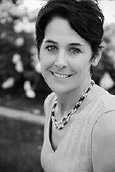Kathleen Finnegan
Home(818) 601-0056
now you know – Calabasas fun facts
Did you know that the City of Calabasas is home to one of the oldest buildings in LA? That’s right. It is the Leonis Adobe structure which dates back to 1844! Or, are you aware that the city’s Pumpkin Festival, which happens every October, is to honor the name of the city, Calabasas, which is believed to be named after a pumpkin or a squash, from the Spanish word Calabaza?
Located only 10 miles east of the beaches of Malibu, Calabasas in Los Angeles County is blocked from receiving those gently cooling Pacific Ocean breezes because of the Santa Monica mountains, the only mountains in the U.S. that traverse the landscape in an east-west direction. The area in which Calabasas is located is also part of the Rim of the Valley Corridor mountains encircling the San Fernando, La Crescenta, Santa Clarita, Simi and Conejo Valleys of Los Angeles and Ventura Counties. This corridor was under study by National Parks Service for consideration and special designation.
Summers in Calabasas range around 90 degrees or hotter, and winters are mild, providing typical Southern California mellow weather. Calabasas is located directly off busy Interstate 101, and is a popular road stop for travelers, though its location is ideal for commuting to jobs both in L.A. and in Ventura County.
Calabasas is located along Highway 101 north of Los Angeles in beautiful rolling hills that lead to a fantastic drive through the Santa Monica Mountains toward Pepperdine University and the Pacific Ocean.
According to the City of Calabasas, the name of the city means pumpkin, squash, or gourd, derived from the Spanish “calabaza”. Some historians say it is actually a translation of the Chumash word “calahoosa” that also refers to a type of gourd. Every October, the City of Calabasas and the Calabasas Chamber of Commerce hosts a “Pumpkin Festival” to celebrate fall, the local wares and talents of Calabasas merchants, and of course, the pumpkin for which our colorful city was named. The event is held at Juan Bautista de Anza Park in Calabasas, which itself, was named for the Spanish explorer commemorated in a national trail that traces his arrival (originating in Baja Mexico) and travels from Arizona to San Francisco in 1775-1776.
The City’s official logo, depicting the red-tailed hawk flying over the Santa Monica Mountains, symbolizes a commitment to preserving the community’s natural beauty and semi-rural quality of life. Yet Calabasas, like most cities outside Los Angeles, is growing
Calabasas is part of the San Fernando Valley, located just 22 miles away from Downtown Los Angeles. It’s neighboring communities are Woodland Hills, Topanga, Agoura Hills, and the world famous Malibu. Residents of Calabasas love that in the hot, summer days, the weather there is always cooler than in the neighboring cities, like Woodland Hills.
Calabasas has about 25,000 residents, and about 9,000 families. The average age of the Calabasas citizen is 38 years old. Most of its citizens are White, with a large population of Jewish and Persian-Americans. There are also a mix of African-Americans, Asians and Native Americans in the area.
There were 8,350 households out of which 44.4% had children under the age of 18 living with them, 64.3% were married couples living together, 9.0% had a female householder with no husband present, and 23.3% were non-families. 17.0% of all households were made up of individuals and 4.1% had someone living alone who was 65 years of age or older. The average household size was 2.76 and the average family size was 3.14.
Kathleen Finnegan
23925 Park Sorrento
Calabasas, Ca 91302
#01193021
Office 818-876-3111
Cell 818-601-0056
 Kathleen has been active in the Calabasas real estate market for over 20 years. Have a question?
Kathleen has been active in the Calabasas real estate market for over 20 years. Have a question? 

